Report on the latest lovely swim at Bawsey 17 March and an examination of the different approaches taken by landowners in similar public lakes in Norfolk and what that means for swimming and water safety.
A wonderful afternoon swim at Brickyard Lake on Sunday 17 March, with 25 people in the water (including three children), and five on land. We met to enjoy this beautiful place and to call for the Right to Swim for all who would also like to be able to swim here and in other inland lakes and waters.
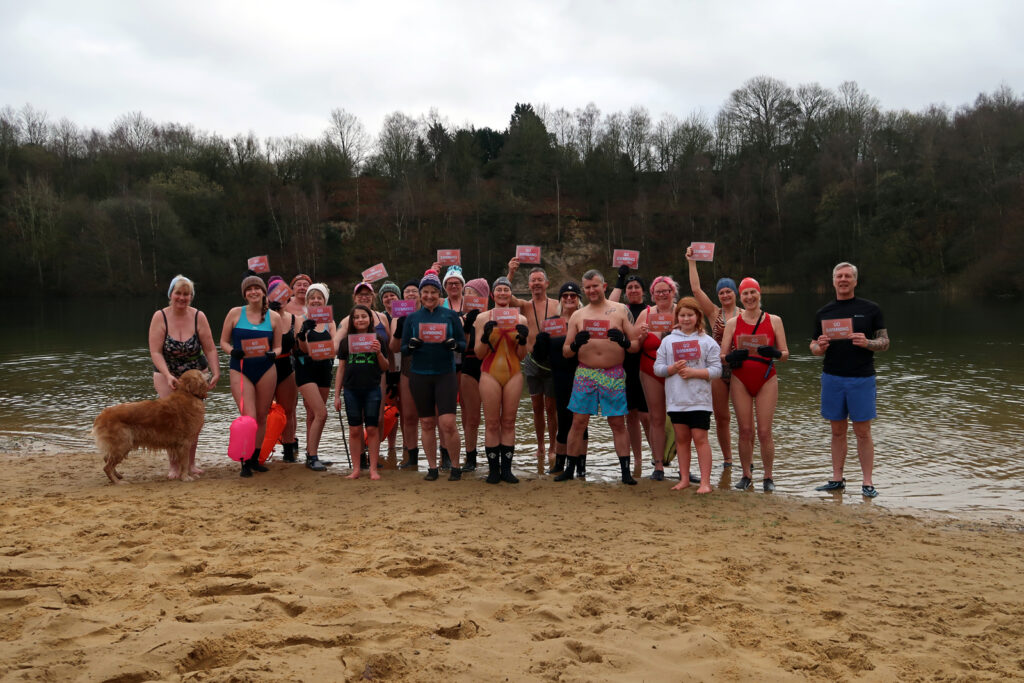
We didn’t have the brightest weather, nor was the water very warm yet, at 10.5 degrees, but spirits were not dampened and there was a lovely family atmosphere. The children hadn’t originally planned to get in but couldn’t resist joining in the fun! Thanks to Ruby for taking photos; see more on Flickr.
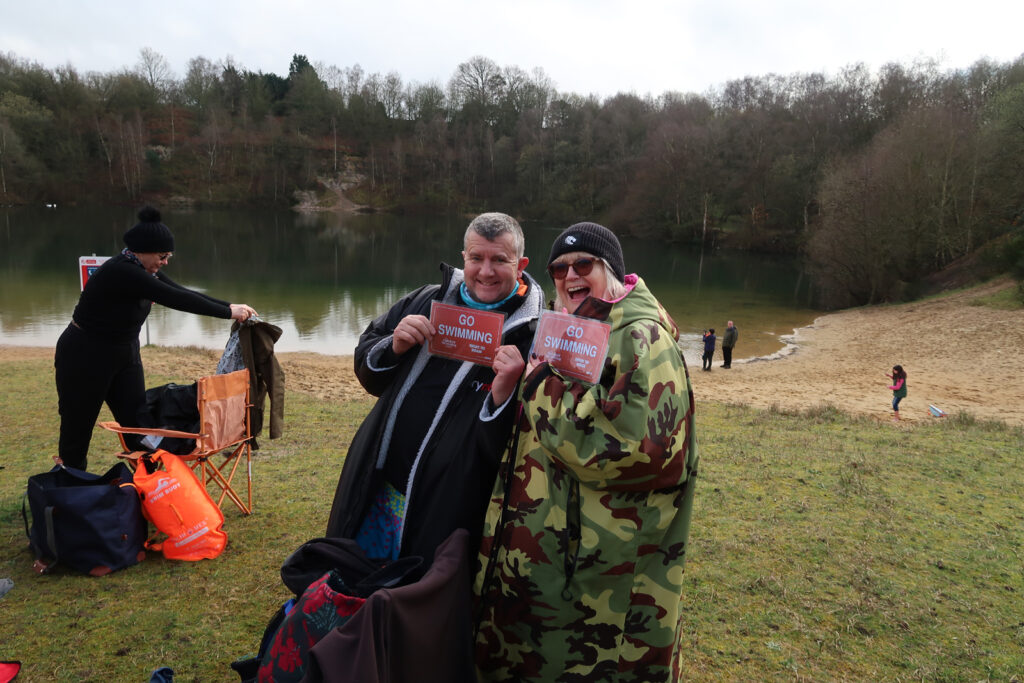
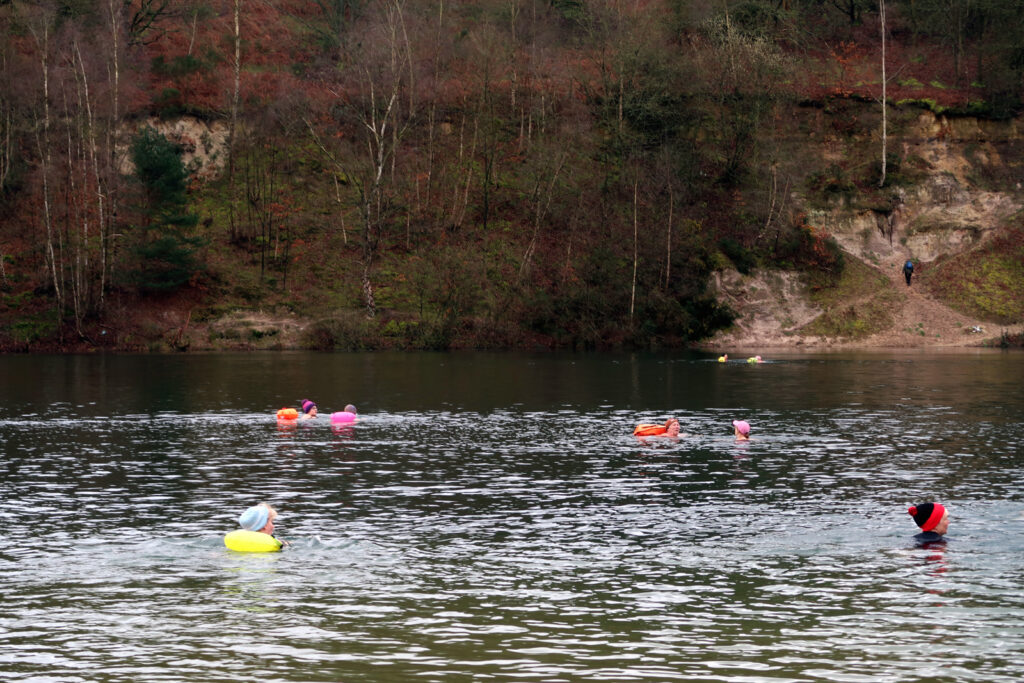
A local swimmer has asked the question: Why do landowners take such a different approach at similar lakes in Norfolk? So this month’s post has a look at the lakes and tries to understand why the landowner seeks to stop swimming at Bawsey while at Lynford the landowner takes a risk-based and welcoming approach, and why this all matters. (Index to sections:)
- Why is swimming allowed at Lynford, not at Bawsey?
- Differences and similarities between the sites.
- Different approaches taken by landowners.
- Why do they take different approaches?
- Why does landowner negativity matter; consequences?
- Why does council take negative approach; why does it matter?
- What can swimmers do?
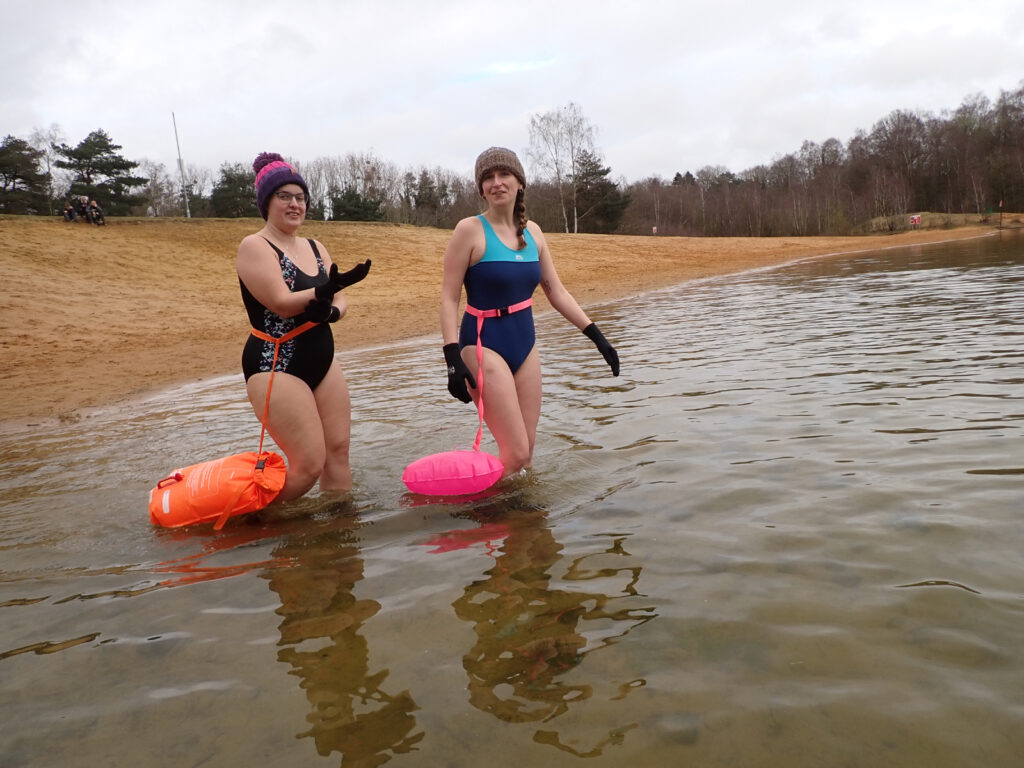
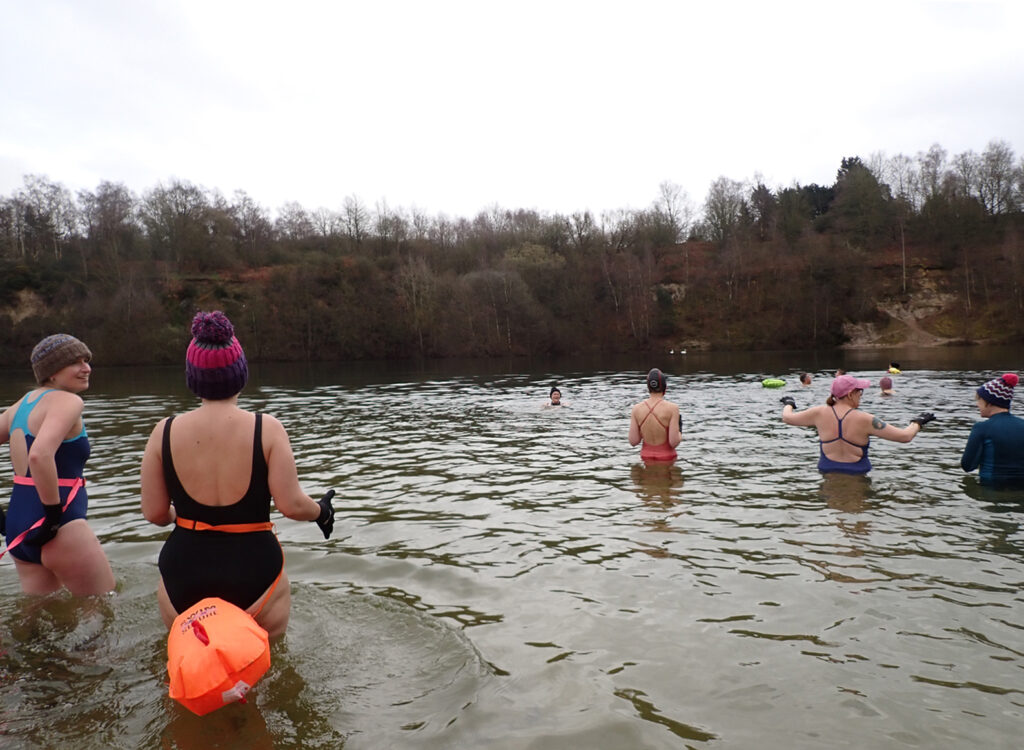
Why is swimming allowed at Lynford but not at Bawsey?
- Both Lynford and Bawsey are beautiful and suitable places to swim, with lakes that were previously sand quarries with public access to the land. But only one landowner recognises this and accepts it can be done at people’s own risk.
- It is a myth that Bawsey is ‘dangerous’ and unsuitable for swimming, as these are very similar lakes with sandy gradually sloping beaches (previously sand quarries) to Lynford where swimming at your own risk is allowed.
- This myth is harmful because it prevents enjoyment of a healthy activity near where a lot of people live, especially those most put off by the aggressive approach. And that negative and fruitless attempt to stop swimming creates an atmosphere in which respect and responsibility is far less likely. It prevents people swimming with their family to learn from an early age what it’s like to swim in open water, to learn about water safety and how to respect the water.
- Lynford and Bawsey are both excellent places to swim for the local community, both being suitable and relatively safe compared with rivers or the sea, and there are good reasons to avoid longer travel by road to alternative venues. A realistic open and positive approach such as at Lynford allows us all to swim, to learn how to do so safely, for regular swimmers to work with the landowner helping on litter, reporting issues and being a positive influence on others at the site and in the community, and this benefits the landowner, the swimmers and the local community.
What is similar and what is different about the two sites?
Each site has two beautiful lakes, with sandy beaches and shallow gradual entry, clean water, public access to the land with car parks and entry on foot on footpaths or open access land. None of the lakes have any specific and unusual risks. Each have the same risks as any other inland open water without the additional risks in rivers or the sea. Each welcomes visitors and has rescue equipment and signage on how to use it and location info for emergency services. At both lakes boating is banned except in organised sessions.
There are differences between the sites. Lynford has two similarly sized lakes; Bawsey has one small lake and one very large lake (and that large lake has relatively acidic water). At Lynford fishing is banned; at Bawsey it is encouraged for a charge (even though there are no fish in the Great Lake). Bawsey charges for car parking and has a café and runs events on site, including some watersports; at Lynford parking is currently free and the nearby café is separate and outside the site, there is one licensed paddleboard coaching business and occasional events by agreement.
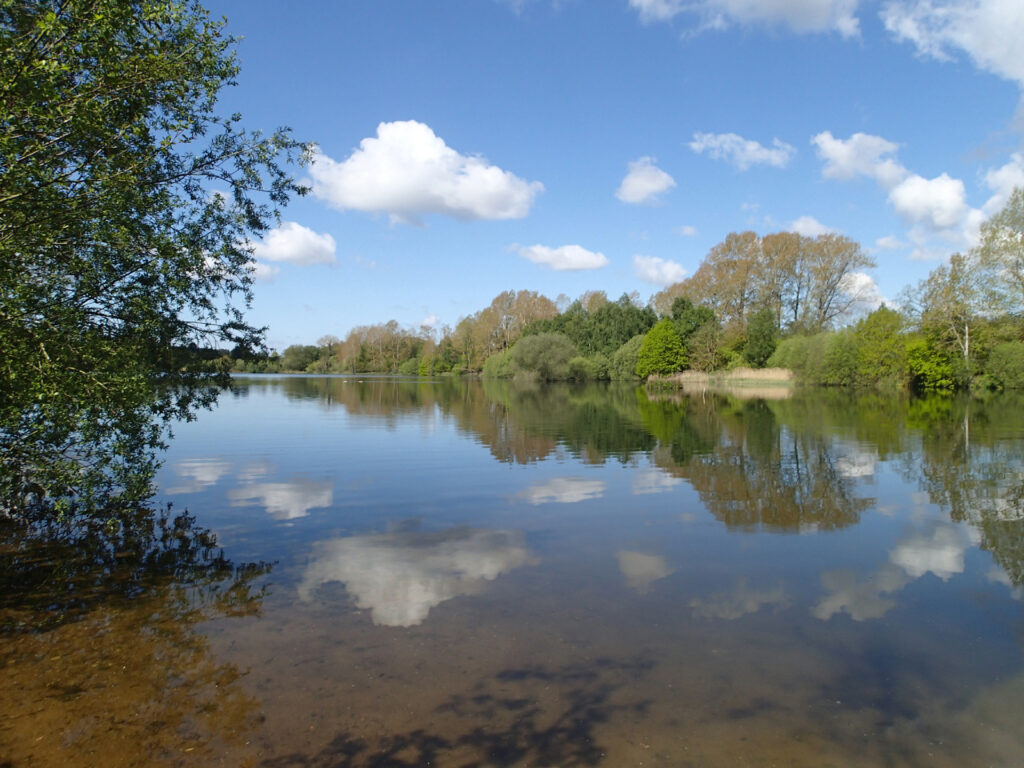
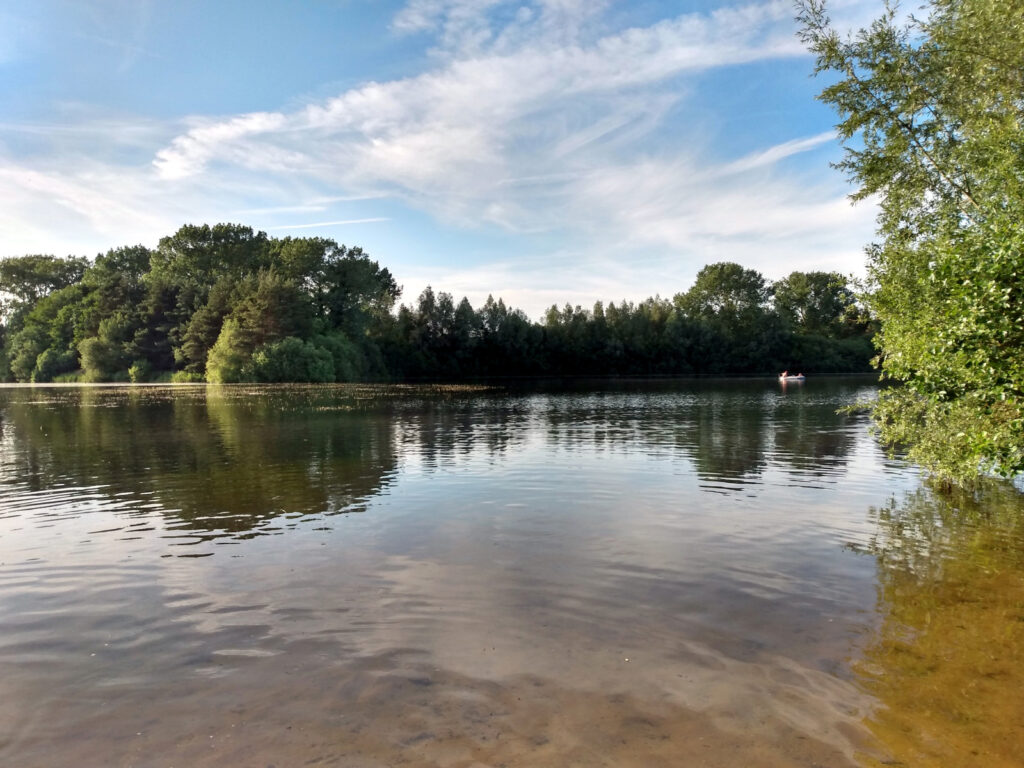
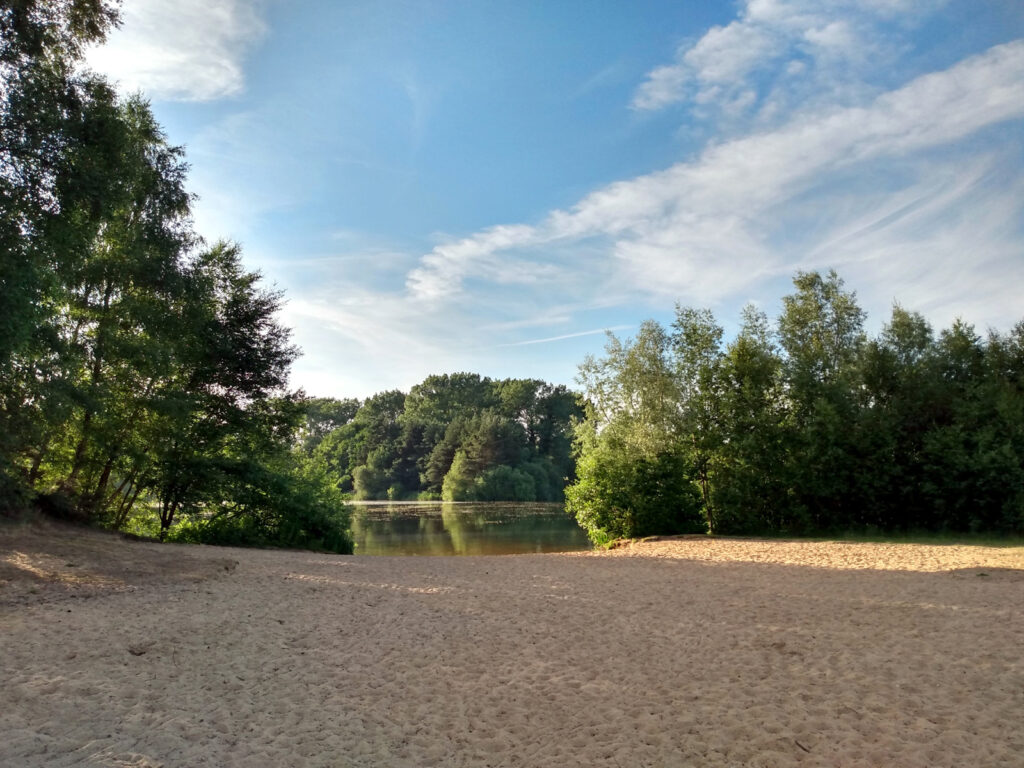
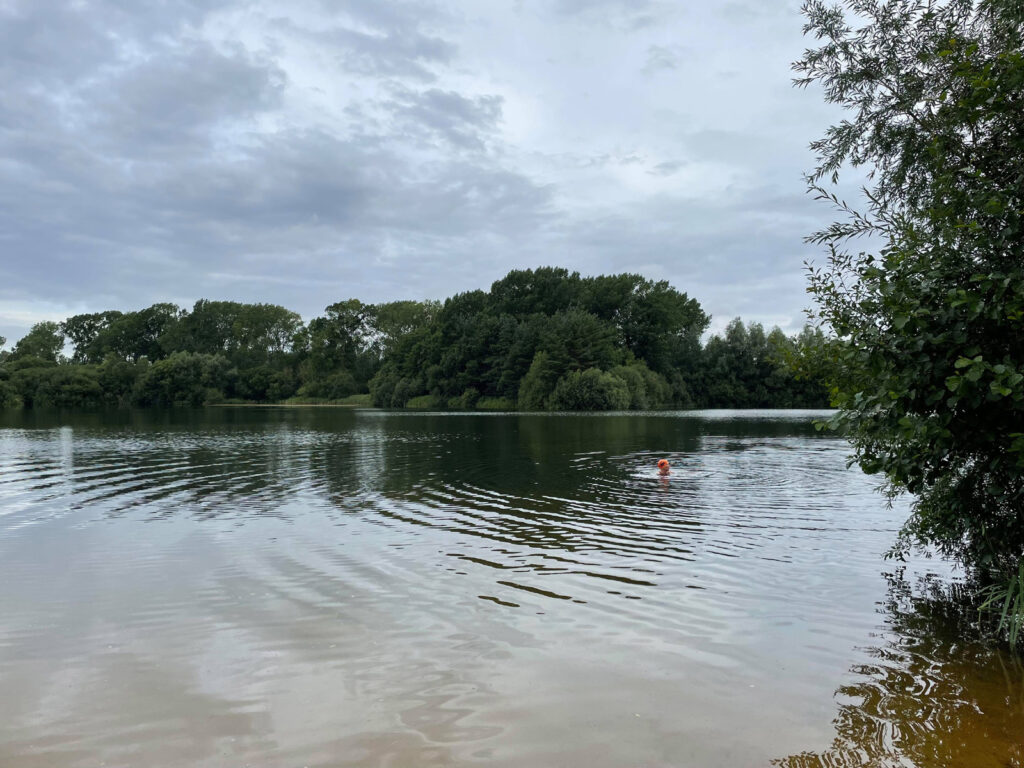
Lynford Water lakes and beaches
Different approaches by landowners
The main difference between these two sites is the approach of the landowner to risk assessment and to swimming and paddling your feet in the lakes.
At Lynford Water in South Norfolk the landowner takes a positive and risk-based approach to swimming in the lakes, and makes it clear that people swim at their own risk, advising those choosing to do so to learn about outdoor swimming. The landowner, instead of spending time and energy trying to stop it happening, welcomes and liaises with local swimmers who pick up litter, report issues and provide a positive influence and information to the swimming and wider community. Many now swim all year round, and their presence has led to a reduction in antisocial behaviour.
The Lynford Water lakes are enjoyed by thousands of people every year – possibly tens of thousands – every year, with the largest numbers in summer. They are able to do so to enjoy swimming, to gain benefits including to their health, to get exercise, to appreciate nature, and importantly to come with their families so that children can be safely introduced to open water and gain an understanding of how to stay safe and have fun in an unmanaged and different environment to the pool.
At Bawsey Country Park in West Norfolk, by contrast, the landowner seeks to do the impossible – to stop people swimming in such lovely water – and instead festoons a beautiful environment with garish and aggressive signage and an attitude that is counter-productive and unnecessary. They claim that the lakes are dangerous, that the only way people could stay safe is not to swim, have not done an accurate assessment of the risks, and have a lot of negative messaging about swimming or paddling your feet. There is a long history of this scaremongering and inaccurate messaging in the local area, and there is considerable local misunderstanding and hysteria fuelled by the landowner and the local council.
People do swim at Bawsey in their hundreds and probably thousands every summer, and in smaller numbers during the colder months of the year. But in doing so they have to face the negativity very apparent at the site, in the local community and social media and from local authorities and local people who have been misled by the long history of inaccurate information. This means that those swims are less likely to be relaxing and enjoyable, that those who are unable to face potential challenge or have been misled are excluded from being able to enjoy the water, and the opportunity for people to learn about open water is denied to them.
The landowner of Bawsey does not get the benefit of assistance and positive influence from regular swimmers (nor the economic benefits that would come from their spending money in the café). We know from behavioural theory that being negative and putting across the message that swimming is dangerous can lead people to more unsafe and irresponsible behaviour. More on this below.
Why do the landowners take such different approaches?
The landowner of Lynford is a long-standing member of the Visitor Safety Group, a grouping of landowners with Guiding Principles focussed on balancing safety of visitors with reduction of barriers that restrict visitor access. They understand the value of accurate assessment of risks and deciding policies based on these. They understand that a positive approach is more effective while a negative approach is counter-productive, and they appreciate the value of liaising with swimmers.
It is unclear why the landowner at Bawsey can’t see that their approach is not working and will not work, and does nothing to help keep people safe. They appear stuck on pursuing their policy and are probably finding it hard to consider changing, as the community attitude is based on the misinformation put out by them and others. They have all of the information and advice from the Visitor Safety Group and the National Water Safety Forum on liability, safety, and have been given accurate information on the real risks at the site. This article on this website seeks to allay landowner fears and includes links to all of that information.
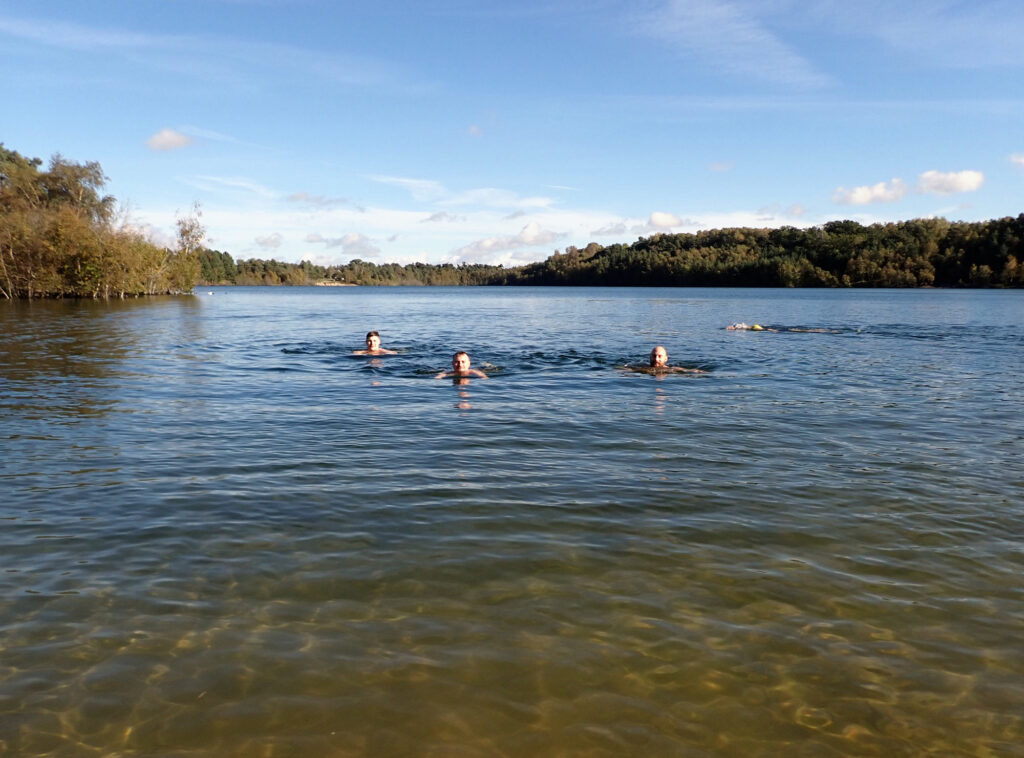
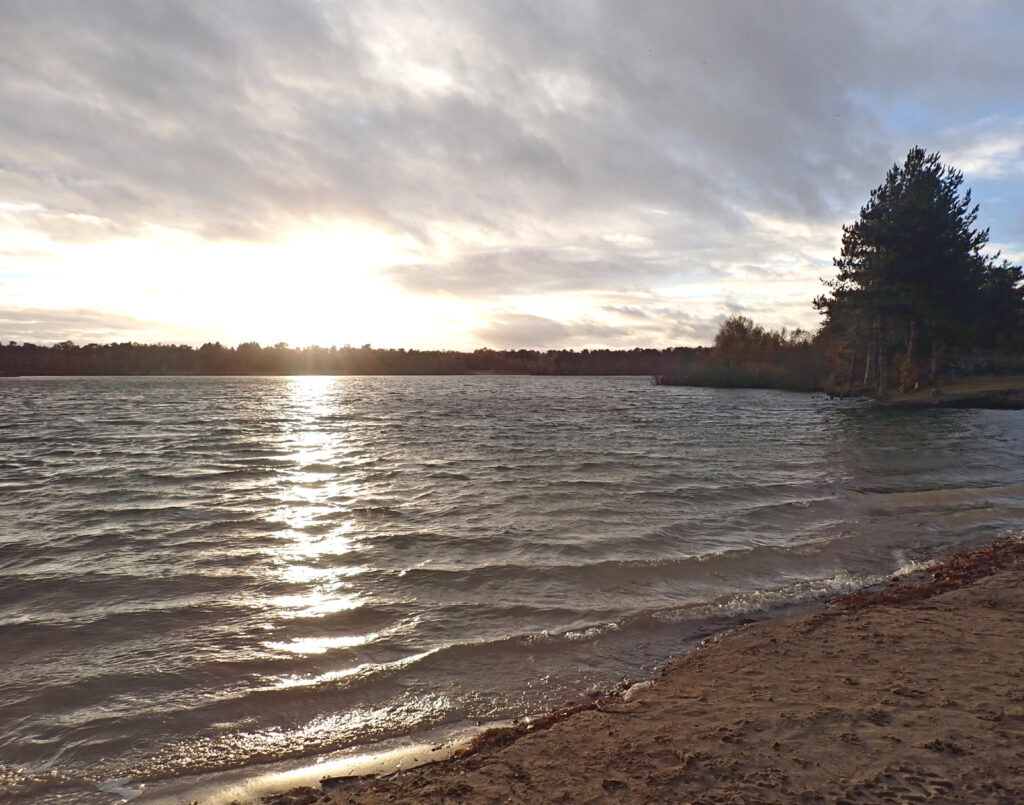
Great Lake Bawsey: Bawsey Bay; western beach
Why does it matter that the approach at Bawsey is so negative and prohibitive?
A negative and aggressive approach causes resentment and makes respect more unlikely. It is counter-productive, as detailed research by behavioural science shows that scaremongering and negative messaging encourages more risky behaviour. See this presentation (on YouTube) on behavioural change theory at a 2021 RoSPA conference by Dr Fiona Fylan, ‘Using What We Know in Behavioural Science to Help Improve Water Safety’.
The aggressive signage and messaging makes it harder for people to feel comfortable swimming at Bawsey, even when they have made their own assessment of the safety for themselves and their family, and hits those who would most benefit from being able to swim there and learn from young about open water and how to be safe.
Why does the local council (in the Bawsey area) take such an inaccurate and belligerent view, and why does this matter?
It appears that the council is swayed by the misinformation and scaremongering that has been put out over decades. This matters because a key role of the local authority is to promote health and well-being – and their approach discourages people from swimming in local benign waters, instead encouraging them to drive to the beach, thus putting themselves at more risk and expense from travel. It would be good if they could listen to the facts and reconsider their stance. Other local authorities in East Anglia and beyond take a much more positive approach, for example this information put out by Oxford City Council on their website, and in a poster, drawn up with the local safety organisations.
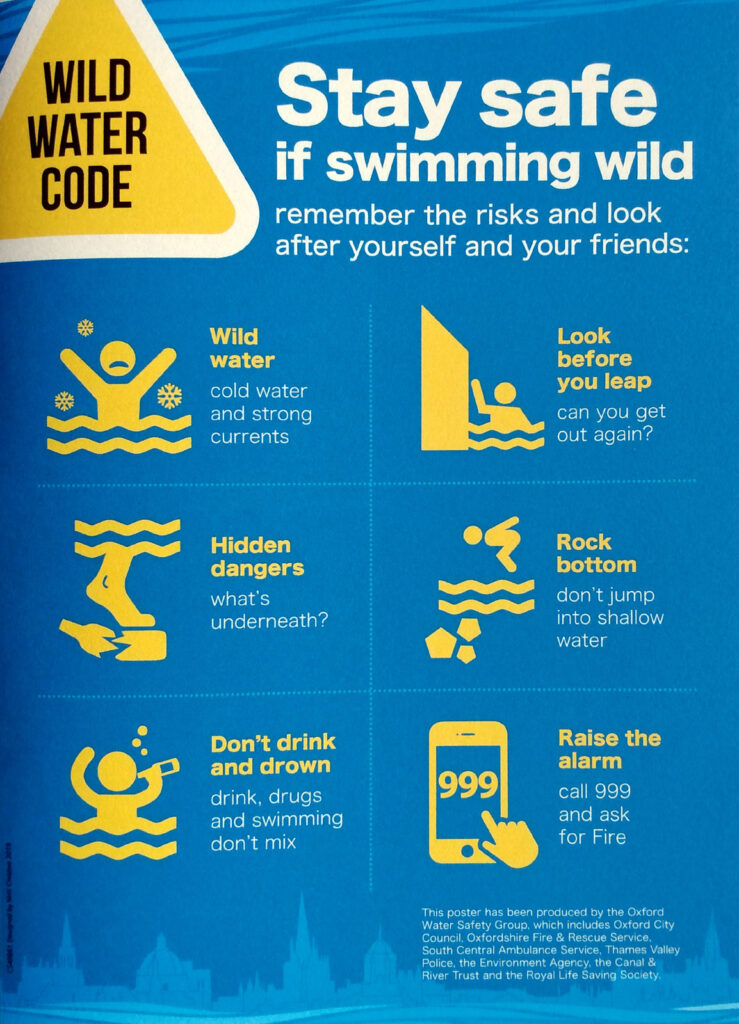
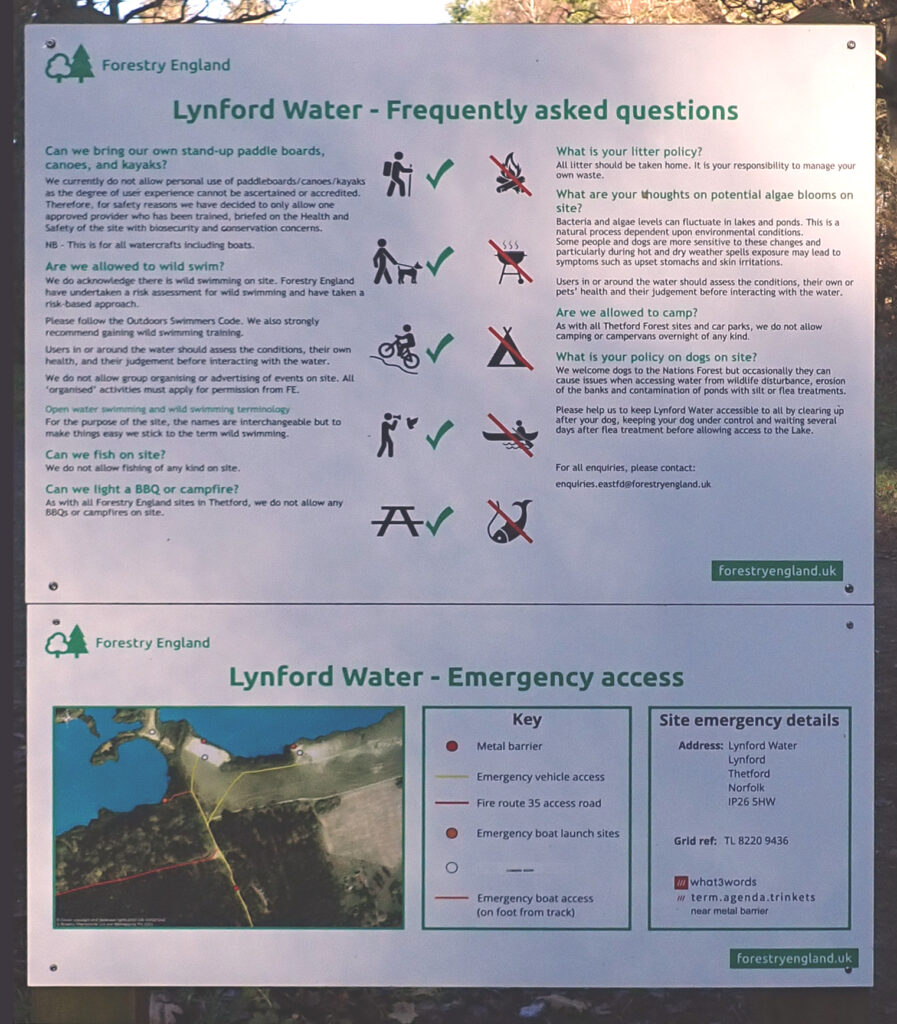
Oxford Wild Swim poster (see also on their council website); Lynford Water sign with FAQ (see on their website)
What can we swimmers do about this?
- Go swimming and keep swimming, increasing the numbers and regularity.
- Continue to enjoy swimming at Lynford and continue caring for the environment.
- Join in the monthly swims at Bawsey – look out for flyers on social media or Contact me through this website or social media if you’d like to be updated when swimmers are meeting.
- Go and swim there together for strength in numbers and to give confidence to those who might be more fearful.
- When swimming at Bawsey pick up litter and spend money in the cafe.
- Share accurate information with friends, family, networks and the community – to counter all the myths and misinformation about Bawsey. We can share our love of swimming and of swimming at this place, too. See the post about the February swim, and other information on the website.
Swimmers are meeting at Bawsey to show their support for The Outdoor Swimming Society’s Inland Access Manifesto calling for freedom to swim and the call from Right to Roam for a right to responsible access to land and water, as in Scotland. Read more about Wild Swimming and Access. To show that we need more access to swim, we suggest swimmers Go Swimming!
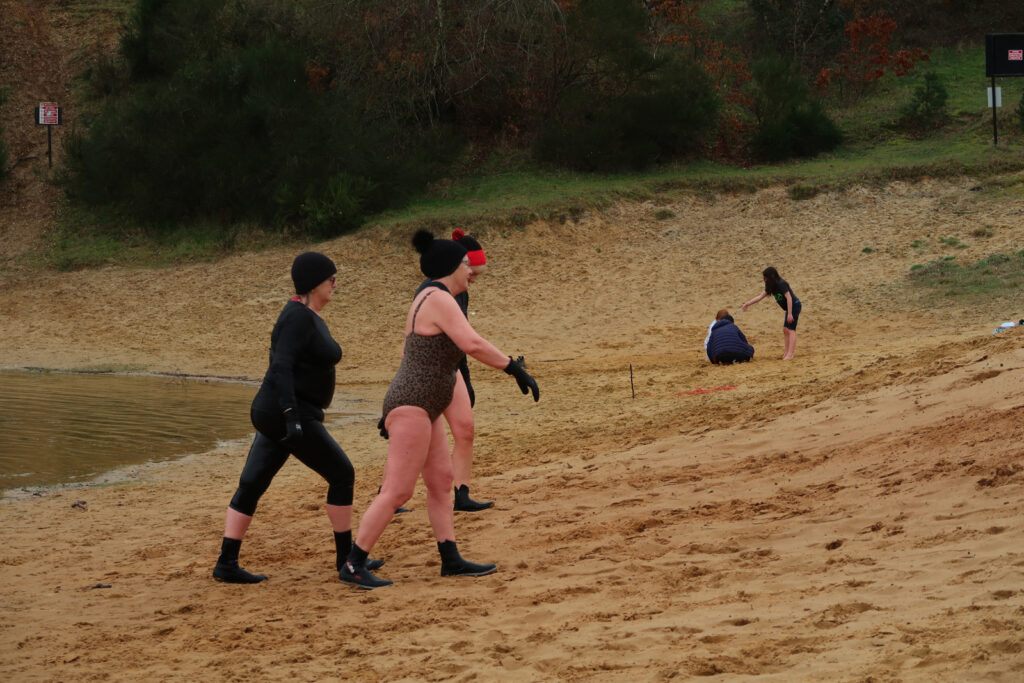
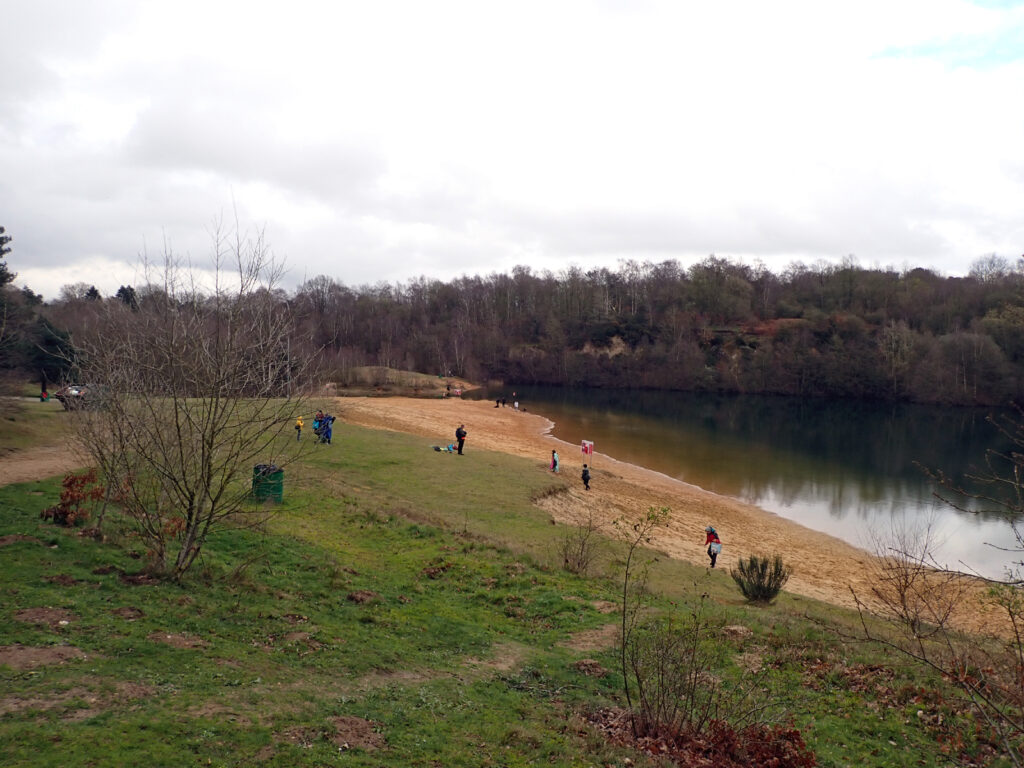
Location details: Bawsey Pits or Lakes

Thermometer reads 10.5° (blurry), 17 March, Brickyard Lake
[Log 1729]
